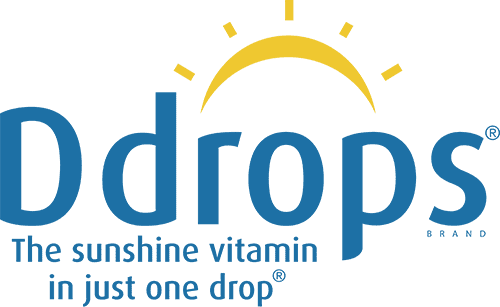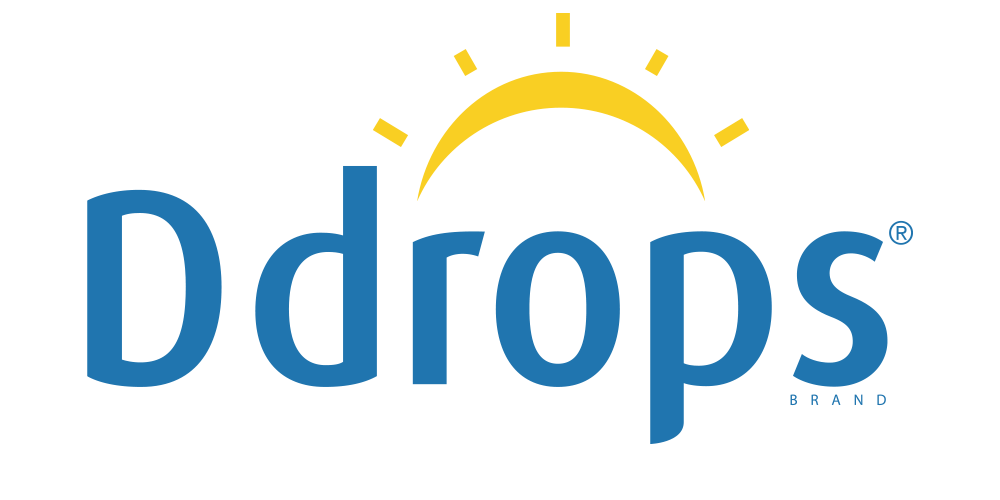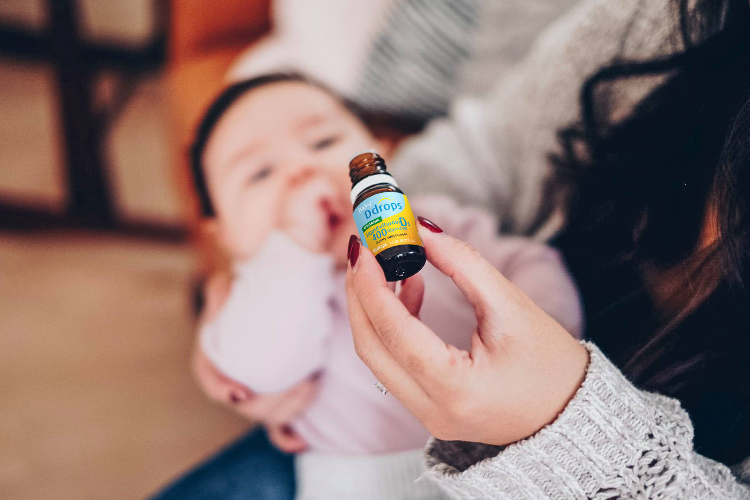May 12, 2016
From the moment a mother discovers that she is pregnant, she does her best to eat a healthy diet to ensure that she is giving her baby good nutrition. After the baby is born, mothers are encouraged to breastfeed because it is considered the best nutrition she can offer her child. However, breastmilk tends to be low in a key vitamin that is important for a growing baby’s body – vitamin D. Several studies have measured the amount of vitamin D in breastmilk and they have all shown consistently low levels of vitamin D, even when the mom is taking a supplement that meets her recommended daily dose. Without enough vitamin D a baby is susceptible to getting rickets, which causes a weakening and softening of their bones. This can cause a delay in the growth of the baby and deformities of their bones, such as bowed legs and thickened wrists or ankles. Since babies grow so much during the first year of their life, it is of the utmost importance that they get enough vitamin D during this critical time.
So how do we fix this problem? Is it possible for mothers to boost their own vitamin D level so that they can pass on adequate amounts to their nursing infants? Is it more effective to give vitamin D directly to the baby? There are two thoughts on this issue. The first is that the baby should only receive their mother’s breastmilk and it is up to the mother to increase her own vitamin D levels so that her baby gets enough. The second is that it is either too difficult or not possible for a mother to increase her own vitamin D levels sufficiently and the baby has a better chance of getting optimal vitamin D levels if they receive vitamin D directly. Who is right? Both are.
Is it possible for a breastfeeding mom to increase her own vitamin D levels so that she can pass on enough vitamin D to her baby? Absolutely! But in order to do this, mom needs to take 4,000 to 6,400 IU of vitamin D per day every day.[1] To put this in perspective, prenatal vitamins typically contain only 400 IU, which is significantly lower than this amount.[2] Women can get some vitamin D from foods such as fortified milk, fatty fish, fish liver oil, and egg yolks but these foods tend to be consumed in small amounts. The sun is also a source of vitamin D but many factors will influence how much vitamin D can be absorbed. These factors are affected by things such as how far north you live, what time of year it is, how much time you spend outside without sunscreen, and the darkness of your skin.[3] Ultimately, the most reliable way to boost vitamin D levels is by taking a supplement using a standalone vitamin D product.
The vitamin D recommendation for adults ranges. Most experts agree that supplemental vitamin D is safe in amounts up to 4,000 international units per day during pregnancy or breastfeeding.[4] There currently isn’t enough safety information to recommend taking doses higher than 4,000 IU per day. Although it is rare, there are certain risks that can occur when taking a vitamin dose that is too large.[5] Therefore, any breastfeeding or pregnant women who are thinking about taking more than 4,000 IU of vitamin D per day should discuss with their healthcare providers first.
So what should a mom do when she either can’t or doesn’t want to take large amounts of vitamin D supplements? The best and safest option is to give the baby a daily supplement of vitamin D. The American Academy of Pediatrics, Health Canada, and the Canadian Pediatric Society all recommend that exclusively breastfed, healthy, term infants should receive 400 IU of vitamin D per day.[6][7][8] The Canadian Paediatric Society recommends that babies who live in northern Native communities should get 800 IU vitamin D per day during the winter months.
Updates and edits by Carrie Noriega, MD, FACOG.
[1] Adekunle Dawodu and Reginald C. Tsang. Maternal Vitamin D Status: Effect on Milk Vitamin D Content and Vitamin D Status of Breastfeeding Infants. 2012 American Society for Nutrition. Adv. Nutr. 3: 353–361, 2012; doi:10.3945/an.111.000950[2] Vitamin D: Screening and Supplementation During Pregnancy. American College of Obstetrics and Gynecology. Committee Opinion Number 495, July 2011 reaffirmed 2015. https://www.acog.org/Resources-And-Publications/Committee-Opinions/Committee-on-Obstetric-Practice/Vitamin-D-Screening-and-Supplementation-During-Pregnancy
[3] Institute of Medicine of the National Academies (US). Dietary reference intakes for calcium and vitamin D. Washington, DC: National Academy Press; 2010.
[4] Vitamin D: Screening and Supplementation During Pregnancy. American College of Obstetrics and Gynecology. Committee Opinion Number 495, July 2011 reaffirmed 2015. https://www.acog.org/Resources-And-Publications/Committee-Opinions/Committee-on-Obstetric-Practice/Vitamin-D-Screening-and-Supplementation-During-Pregnancy
[5] Adekunle Dawodu and Reginald C. Tsang. Maternal Vitamin D Status: Effect on Milk Vitamin D Content and Vitamin D Status of Breastfeeding Infants. 2012 American Society for Nutrition. Adv. Nutr. 3: 353–361, 2012; doi:10.3945/an.111.000950.
[6] American Academy of Pediatrics, Vitamin D Supplementation for Infants, 3/22/2010, https://www.aap.org/en-us/about-the-aap/aap-press-room/pages/Vitamin-D-Supplementation-for-Infants.aspx




ทิ้งข้อความไว้
เว็บไซต์นี้ได้รับการคุ้มครองโดย hCaptcha และมีการนำนโยบายความเป็นส่วนตัวของ hCaptcha และข้อกำหนดในการใช้บริการมาใช้